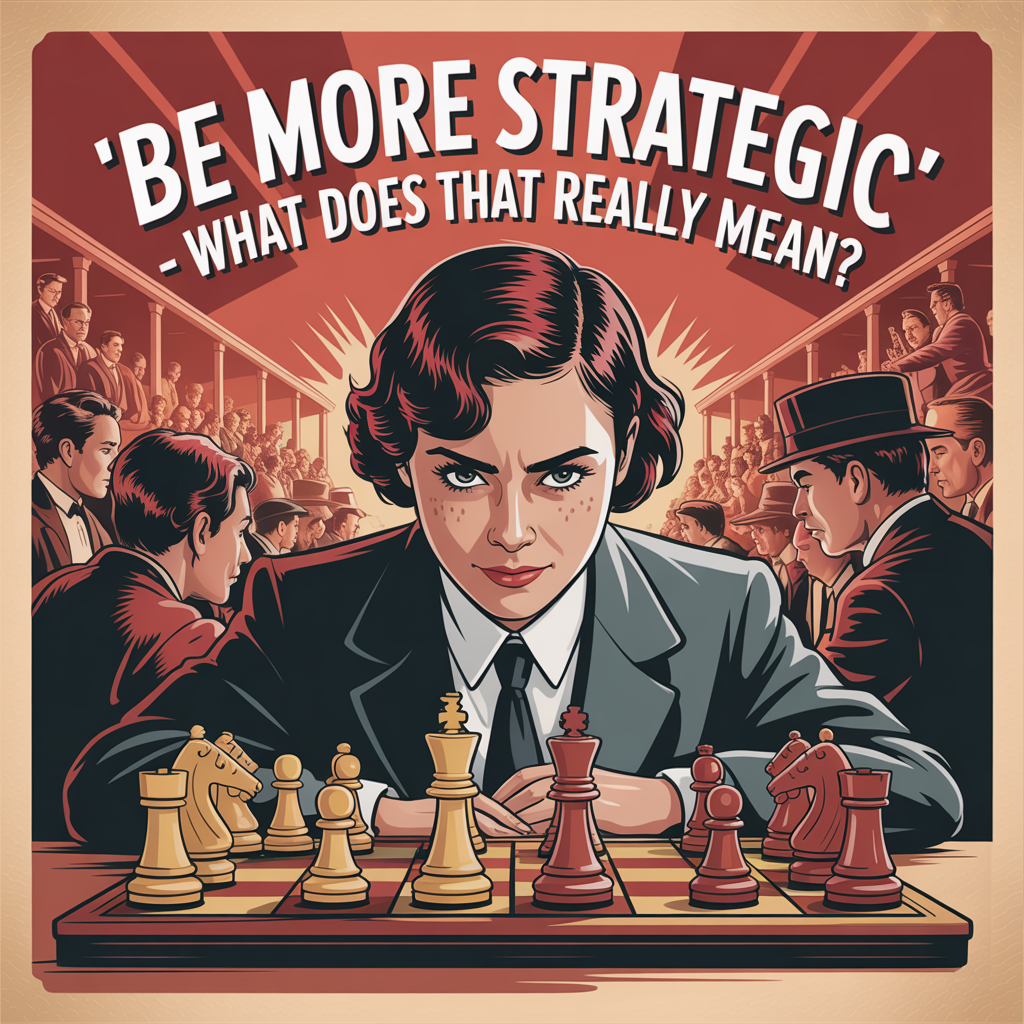Thursday, October 30, 2025
Thursday, October 30, 2025

Jenny Moran:
“Be more strategic.”
Has a manager ever said this to you?
About ten years ago, mine did. I had totally missed flagging a potential communications issue – something that I had casually dismissed as a non-event, or in our workspeak, “a nothing burger.” I may have even used that exact phrase when I described it to her.
It was at that moment, as my manager looked at me with a mix of concern and curiosity, that she said, “You need to be more strategic.”
My mind immediately went blank.
Be more strategic? What does that even mean, like specifically? This type C blue person needs details. Give me the step-by-step, the framework, the checklist – and I’m there.
But this? This felt like one of those vague, lofty phrases that gets tossed around in leadership circles but rarely lands with actionable meaning.
Sensing my confusion, she smiled patiently and said, “I can help.”
That moment became a turning point. One of those Before/After moments. Before, “strategic” was just a word – something abstract and super intimidating. After, it became a challenge. A journey. A skill I could learn, refine, and grow into. And of course, get specific about.
I slowly started to learn about what it meant to “see the big picture”, “look around corners”, and all those other eloquent but vague phrases we hear leaders say with such conviction but never really understand what they’re actually talking about. So, I dug deeper. I started asking questions, reading, observing, and most importantly – practicing.
In the case of my “nothing burger,” my blind spot was failing to consider the wider implications beyond our immediate communications team. It wasn’t just about our small group. I needed to factor in broader company dynamics, cross-functional dependencies, and even geopolitical considerations that could have a potentially negative impact on the company brand.
That’s when I started to realize being strategic isn’t just about thinking ahead. It’s about thinking around. It’s about zooming out to see how your actions, decisions, and communications fit into a larger system. It’s about understanding and providing context, anticipating consequences, and aligning with long-term goals.
And here’s the thing, being strategic isn’t reserved for the C-suite. It’s a mindset. A muscle. One that anyone can build – regardless of role or title.
Many of us have heard the feedback to “be more strategic” and wondered what it really means. I know I can’t be alone in wanting to be more strategic as a communications professional. I mean here we have an entire magazine devoted to it!
So, if someone ever tells you to “be more strategic,” don’t panic. Take it as an invitation. A challenge. A growth opportunity. Because once you start figuring it out, you’ll never look at the “nothing burgers” the same way again.
Over the next few months, here in Strategic Magazine and on my LinkedIn, I’ll be sharing what I’ve learned over the past 10 plus years working in various Communications roles in large global companies about how to be more strategic… specifically.
Up next, look out for my second article and LinkedIn video titled: Part 1: “How to be more strategic… specifically.” It will cover the first thing my manager helped me with after that defining moment ten years ago. A question I still repeat to myself every day in my pursuit to be more strategic
+++
Jenny Moran is an AI-curious communicator, coach, connector, and cold-weather person who helps leaders at all levels shine with purpose. After nearly a decade working in Communications at Microsoft, including as Chief of Staff, she now works as an internal communications leader at Wolt (DoorDash).
Written by: Editor
© 2025 Stratpair Ltd., trading as Strategic. Registered in Ireland: 747736